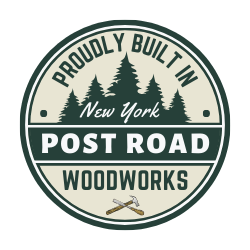Choosing the right cutting board is an essential decision for any kitchen enthusiast, especially for those who appreciate the art of woodworking. Two of the most popular choices are end grain and edge grain cutting boards. Both have unique characteristics that cater to different needs and preferences. In this blog post, we’ll explore the differences between these two types of cutting boards to help you decide which one is best for your kitchen.
End Grain Cutting Boards
What is End Grain?
End grain cutting boards are made by arranging pieces of wood so that the ends of the wood fibers are exposed on the cutting surface. This technique showcases the tree’s growth rings, creating a visually appealing checkerboard pattern.

Benefits of End Grain
- Knife-Friendly: The fibers in end grain cutting boards part when the knife blade comes down, which helps maintain the sharpness of your knives.
- Durability: End grain boards are self-healing. The fibers close up after being cut, reducing visible marks and extending the board’s lifespan.
- Aesthetic Appeal: The intricate patterns and natural beauty of end grain boards make them a stunning centerpiece in any kitchen.
Considerations
- Price: These boards are generally more expensive due to the complexity of their construction.
- Maintenance: They require regular oiling to keep the wood conditioned and to prevent cracking.
Edge Grain Cutting Boards
What is Edge Grain?
Edge grain cutting boards are made by gluing long boards together with the edges facing up. This method displays the long, straight grain of the wood.

Benefits of Edge Grain
- Cost-Effective: Edge grain boards are usually less expensive than end grain boards due to simpler construction.
- Stability: These boards tend to be more stable and less prone to warping over time.
- Easier Maintenance: Edge grain boards generally require less maintenance and are easier to clean.
Considerations
- Knife Wear: They are slightly harder on knives because the fibers do not part as easily as in end grain boards.
- Durability: Edge grain boards show knife marks more readily and can develop grooves over time.
Which One Should You Choose?
Your choice between an end grain and an edge grain cutting board ultimately depends on your priorities. If you value aesthetics, knife care, and durability and are willing to invest in regular maintenance, an end grain board is an excellent choice. On the other hand, if you prefer a more budget-friendly option that’s easy to maintain and still offers great functionality, an edge grain board might be the way to go.
Summary Table
| Feature | End Grain Cutting Board | Edge Grain Cutting Board |
|---|---|---|
| Knife-Friendly | Excellent | Good |
| Durability | Self-healing, long-lasting | Durable, but shows knife marks |
| Aesthetic | Beautiful, intricate patterns | Simple, straight grain |
| Price | More expensive | More affordable |
| Maintenance | Regular oiling required | Easier to maintain |
No matter which type you choose, both end grain and edge grain cutting boards are wonderful additions to any kitchen. They not only serve as functional tools but also as beautiful pieces of craftsmanship that can enhance your cooking experience.
If you have any questions or need further guidance, feel free to reach out to us. Happy cooking and happy woodworking!
Let us know in the comments which type of cutting board you prefer and why!
This blog post was brought to you by Post Road WoodWorks, where we pride ourselves on creating high-quality, handcrafted wooden products for your home.


